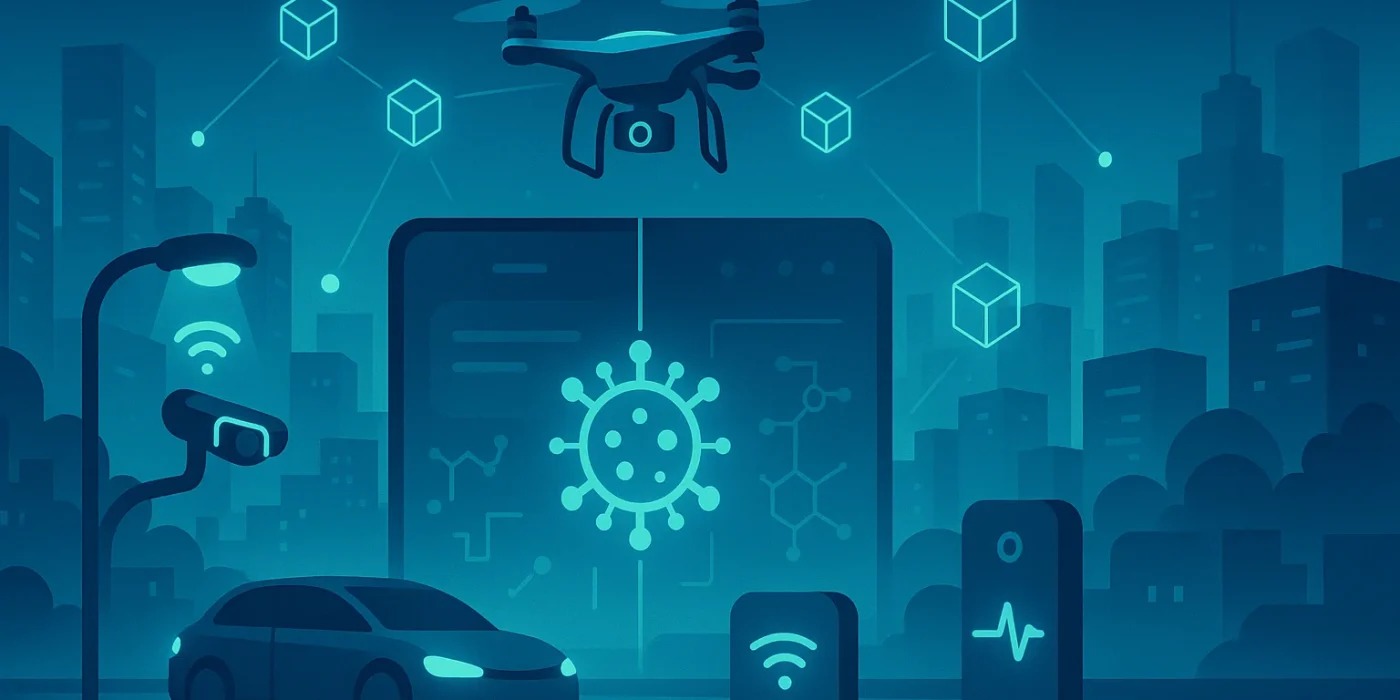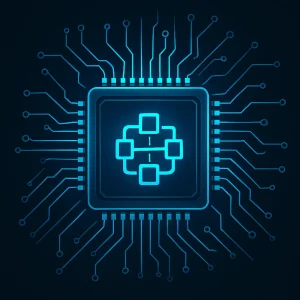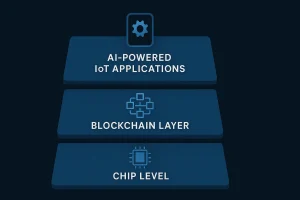For years, the promise of the Internet of Things (IoT) has been held back by one simple truth: our chips weren’t built for a decentralized future. That’s exactly what Skynet wants to change. By combining blockchain and artificial intelligence directly into silicon, Skynet is introducing a Blockchain on Chip (BoC) — a hardware leap that could redefine how devices connect, transact, and learn.
This isn’t just a faster processor. It’s a blueprint for the machine-to-machine (M2M) economy.

The IoT Chip Market
 Walk into any connected device today — a smartphone, a sensor, even your smartwatch — and chances are it’s powered by an ARM design. ARM dominates because of its balance of performance and power efficiency, with an estimated 94% to 99% market share in smartphones alone. The ARM processor market size was about $25 billion in 2023 and is forecasted to grow to $70 billion by 2032, driven by consumer electronics and mobile computing demand.
Walk into any connected device today — a smartphone, a sensor, even your smartwatch — and chances are it’s powered by an ARM design. ARM dominates because of its balance of performance and power efficiency, with an estimated 94% to 99% market share in smartphones alone. The ARM processor market size was about $25 billion in 2023 and is forecasted to grow to $70 billion by 2032, driven by consumer electronics and mobile computing demand.
But that dominance comes at a cost
ARM licenses run from $1 million to $10 million upfront plus royalties on every chip produced, typically 1-2% of the chip’s selling price. Recently, ARM announced plans to increase licensing fees by up to 300%, aiming to raise an additional $1 billion in revenue over the next decade. This creates a locked gate in front of innovation, raising barriers for startups and smaller chip developers.
Enter RISC-V, the open-source instruction set that removes those licensing fees. Over 3,000 companies worldwide are now investing in RISC-V, leveraging its flexibility to reduce chip development costs by up to 50% and foster innovation. Much like how open-source software broke monopolies in the digital world, RISC-V is disrupting the hardware space by enabling custom features and optimizations without licensing restrictions.
Skynet builds on this movement
Skynet is developing a next-generation processor built around the RISC-V architecture, incorporating multiple patent-pending technologies to optimize blockchain and AI applications. This custom chip includes hardware features like a cryptocurrency wallet for secure key management, on-chip hash accelerators for data integrity, automated transaction signing, and a neural processing unit designed for efficient AI inference. Skynet’s core processor is license-free and aims to serve as a competitive, blockchain-ready, AI-accelerated alternative in the ARM-dominated IoT chip ecosystem, fostering innovation with an open and extensible architecture.
Skynet Core Bundle
So what makes Skynet Core different? It’s not just another processor; it’s an ecosystem in a chip.
On-chip cryptocurrency wallets → Devices can handle secure micropayments natively.
Cryptographic acceleration → Blockchain transactions processed at GPU-like speeds.
Automatic transaction signing → Built-in device identity and trust at the hardware level.
AI tensor arrays → Training and running deep learning models on the device itself, no cloud required.
In other words, Skynet Core is designed to seamlessly integrate blockchain and AI into IoT devices, making decentralized intelligence a plug-and-play reality.
Skynet Open Network Adoption
But hardware alone isn’t enough. A blockchain-ready chip needs a blockchain backbone. That’s where the Skynet Open Network comes in — a high-throughput, global blockchain designed for secure machine-to-machine communication.
Imagine this:
-
One set of devices collects real-world data and shares it.
-
Another set contributes spare computing power to the network.
-
A third set uses that power to train AI models.
All transactions? Autonomous. All payments? Machine-to-machine. All coordination? Peer-to-peer.
It’s a decentralized alternative to cloud giants like AWS or Google Cloud, but powered by the devices themselves. A self-sustaining ecosystem where IoT devices aren’t just passive nodes but active participants in a global data and computing economy.
End-to-End Solution
 What makes Skynet disruptive isn’t a single breakthrough — it’s the stacked integration.
What makes Skynet disruptive isn’t a single breakthrough — it’s the stacked integration.
At the base layer, Skynet Core offers a license-free, blockchain-ready processor.
At the network layer, the Skynet Open Network ensures secure, high-speed communication.
At the application layer, AI and decentralized resource sharing unlock new use cases — from autonomous vehicles to predictive maintenance, from decentralized cloud computing to AI-driven edge intelligence.
This isn’t just about cheaper chips. It’s about reshaping the economics of IoT connectivity. With blockchain baked into the hardware and AI modules available on demand, devices can move from being controlled by the cloud to becoming the cloud themselves.
Final Thoughts
Skynet isn’t just about adding another layer of tech. It’s about flipping the way we think about IoT — moving from simple connections to a world where devices can trade, learn, and work together without anyone sitting in the middle.
With blockchain and AI baked right into the core, Skynet feels less like an upgrade and more like the groundwork for what comes next — a decentralized, machine-powered economy where devices aren’t just connected, they’re actually capable.
Want to see how this vision translates into real-world impact? Check out our Blockchain services to explore how we help businesses build secure, scalable, and future-ready solutions.
Build custom AI solutions that deliver real business value
From strategy to deployment, we help you design, develop, and scale AI-powered software that solves complex problems and drives measurable outcomes.



